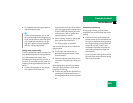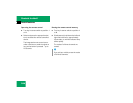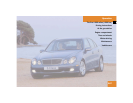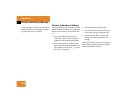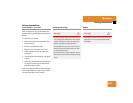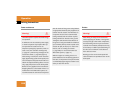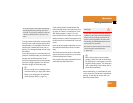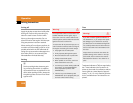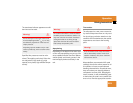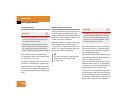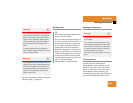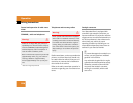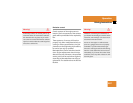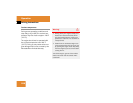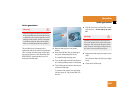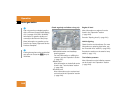
253
Operation
Driving instructions
The tread wear indicator appears as a solid
band across the tread.
Specified tire pressures must be main-
tained. This applies particularly if the tires
are subjected to high loads (e.g. high
speeds, heavy loads, high ambient temper-
atures).
Aquaplaning
Depending on the depth of the water layer
on the road, aquaplaning may occur, even
at low speeds and with new tires. Reduce
vehicle speed, avoid track grooves in the
road and apply brakes cautiously in the
rain.
Tire traction
The safe speed on a wet, snow covered or
icy road is always lower than on a dry road.
You should pay particular attention to the
condition of the road whenever the outside
temperatures are close to the freezing
point.
Mercedes-Benz recommends M+S rated
radial-ply tires for the winter season for all
four wheels to insure normal balanced
handling characteristics. On packed snow,
they can reduce your stopping distance
compared to summer tires. Stopping dis-
tance, however, is still considerably great-
er than when the road is not covered with
snow or ice. Exercise appropriate caution.
Warning! G
Do not allow your tires to wear down too far.
As tread depth approaches
1
⁄
16
in (1.5 mm),
the adhesion properties on a wet road are
sharply reduced.
Depending upon the weather and/or road
surface (conditions), the tire traction varies
widely.
Warning! G
Do not drive with a flat tire. A flat tire affects
the ability to steer or brake the vehicle. You
may lose control of the vehicle. Continued
driving with a flat tire or driving at high
speed with a flat tire will cause excessive
heat build-up and possibly a fire.
Warning! G
If ice has formed on the road, tire traction
will be substantially reduced. Under such
weather conditions, drive, steer and brake
with extreme caution.



